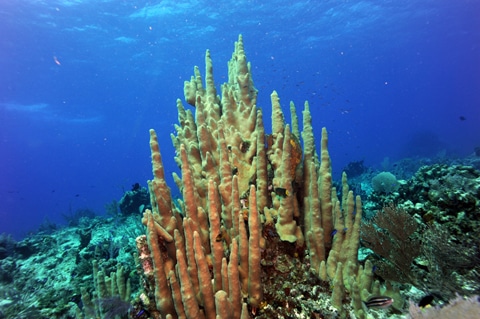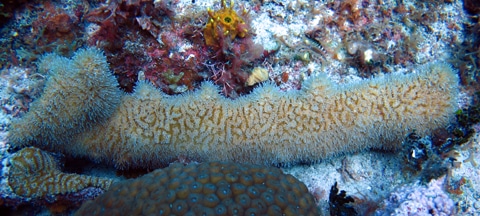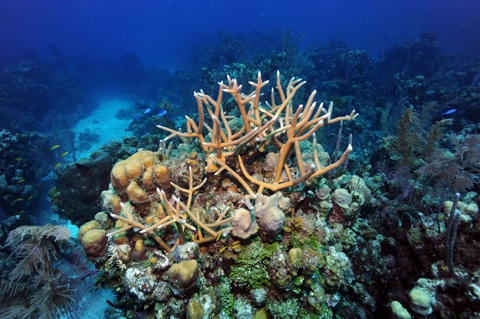Throughout most of the Caribbean, there are species of coral that are common and easily spotted on a dive, and those that are rare corals and difficult to locate. Experienced divers can usually characterize a reef fairly quickly based on the types of corals growing there. Some common corals that are generally easy to find include star corals (Montastrea sp.), starlet corals (Siderastrea sp.) and brain corals (Diploria sp.). On the other hand, rare corals include pillar corals (Dendrogyra cylindrus) and staghorn corals (Acropora cervicornis). The corals of Hogsty Reef and Great Inagua have so far not followed this formula. Living Oceans Foundation researchers have seen an unusually high number of rare corals. Specifically, pillar corals appear to be thriving on the reefs here and staghorn corals are demonstrating remarkable resilience.

Pillar coral is the only representative of an evolutionarily distinct genus. It grows as multiple vertical spires that reach up towards the surface in clusters. Pillar coral is distinct in appearance as its polyps (individual coral animals) are extended during the daytime. Remarkably, pillar corals seem to be very resistant to diseases affecting many other Caribbean coral species. Pillar corals extend their tentacles into the water column day and night to sting and grab morsels of plankton floating by in the water column. In contrast, most stony corals feed actively at night, and their polyps remain withdrawn during the day. Pillar corals can reproduce either by spawning (releasing eggs and sperm into the water column) or when fragments break off and begin to re-grow (fragmentation). Scientists and coral reef managers in other parts of the Caribbean have had some success in transplanting branches of pillar coral onto reefs where it no longer occurs. The International Union for the Conservation of Nature (IUCN) has listed this species as vulnerable on its Red List of Threatened Species.

Staghorn coral is native to the Caribbean and grows in branching, tangled stands. The long branches can grow from 10-20 cm a year. This is record speed for coral growth in the western Atlantic. Most other corals grow only about 1 cm each year. As you might imagine, the species is important for creating habitat for reef fish and invertebrates. Similar to pillar coral, it can re-grow from broken fragments, which helps it rebound from damage due to hurricanes. Coral disease, predation by reef invertebrates, and algae overgrowth has largely wiped out staghorn corals from the western Atlantic. Disease, especially white band disease, has hit staghorn corals particularly hard. IUCN has listed the species as threatened on its Red List of Threatened Species.

One of the major impacts of climate change on coral reef environments is warming sea surface temperatures. This leads to coral bleaching and reduces the corals resistance to coral diseases resulting in mortality. Climate change and chronic human stressors impact Caribbean corals’ sustainability. Living Oceans Foundation researchers are, therefore, encouraged to have observed pillar coral and staghorn coral species doing quite well in the Inaguas.
Written by Kit van Wagner
(Photo/Images by: 1 , 3 Phil Renaud, 2 Amanda Williams)
To follow along and see more photos, please visit us on Facebook! You can also follow the expedition on our Global Reef Expedition page, where there is more information about our research and our team members.